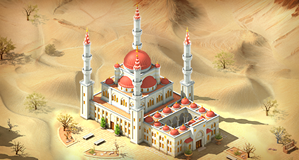

In her review, Kakutani wrote that it "is at once a biography, a detective story and a wonderfully vivid piece of travel writing that combines Bruce Chatwinesque powers of observation with a Waugh-like sense of the absurd. The Lost City of Z was reviewed by Rich Cohen in the Sunday New York Times Book Review, who said it was "a powerful narrative, stiff lipped and Victorian at the center, trippy at the edges, as if one of those stern men of Conrad had found himself trapped in a novel by García Márquez." Ĭritic Michiko Kakutani ranked it as one of the ten best books of 2009. The jungle was quickly reclaiming the land. The earliest conquistadors left records of their glimpses of this civilization, but by the time they tried to explore the rainforest again, the indigenous people were all but gone. The high rate of fatality of these epidemics disrupted the people and their society: in only a few years, they were so devastated by disease that they had virtually died out.

Many died due to new infectious diseases, which may have been carried by some of their usual indigenous trading partners, rather than directly by Europeans. The settlements and civilization of these people appeared to have lasted long enough for them to have had contact with Europeans.

Their monuments extended horizontally, rather than being built as the pyramidal structures developed by the Mayan or Aztec peoples. Their constructions included bridges across some of the great tributaries of the Amazon. until around 1600, according to carbon-dating data obtained from the moats and pottery. The structures were made of wood, supporting a society that flourished from approximately 200 A.D. Construction methods showed sophisticated engineering. Kuhikugu encompasses more than 20 settlements, each supporting as many as 5,000 people. Contemporary villages are laid out in patterns similar to those seen at three sites of the ancient cities. Pottery methods had remained nearly identical and the tribes followed a diet that prohibited several sources of food-striking considering the long-held belief that such prohibitions would mean death in the harsh rainforest. Perhaps most intriguing were the direct parallels between the site, referred to as Kuhikugu, and tribes of the area. Black Indian earth showed evidence that humans had added supplements to the soil to increase its fertility to support agriculture. Heckenberger also found evidence of wooden structures and roads that cut through the jungle. The ruins were surrounded by several concentric circular moats, with evidence of palisades that had been described in the folklore and oral history of nearby tribes. ( May 2019) ( Learn how and when to remove this template message)įirst in his 2005 article "The Lost City of Z" and later in the book he developed and published with the same title, David Grann reported on excavations by the archeologist Michael Heckenberger at a site in the Amazon Xingu region that might be the long-rumored lost city. Unsourced material may be challenged and removed. Please help improve this article by adding citations to reliable sources. This section needs additional citations for verification.


 0 kommentar(er)
0 kommentar(er)
